Is Mindanao Safe To Travel To?
Earlier this year I made the decision to book a plane ticket to Cagayan de Oro, the largest city in Northern Mindanao. I wanted to see the Philippines' second largest and second most populous island, yet I knew almost no travellers or tourists who had ever been here. It's an island that's always intrigued me, but a place that is always in the news for the wrong reasons, for kidnappings, piracy and most recently for the deadly Siege of Marawi.
But I knew that it couldn't all be bad. I know from experience that government warnings shouldn't always be taken too seriously. I knew that there must be much more to Mindanao than what I saw on the news.
I'll admit it though, I was scared when I was waiting to board the plane from Cebu City to Cagayan de Oro. The siege was very recent and I've never heard anything but negativity from Mindanao. Still, I boarded that plane. I knew that 25 million Filipinos couldn't live on this huge island day to day if it was really all that bad.
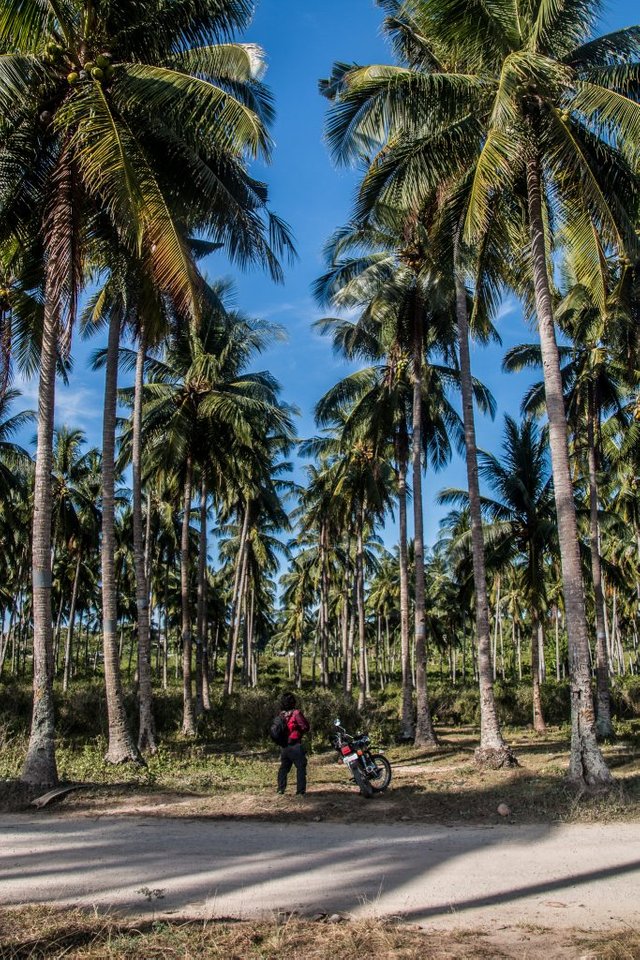
I wanted to know: is Mindanao safe to travel to?
When I look at my government's Foreign and Commonwealth Office travel guidance website then Mindanao is the huge, dauntingly red and yellow island at the southern end of the Philippines. The rest of the regions in the country are all bright green. Green is safe. Red and yellow are dangerous. Simple.
But it's not that simple.
Mindanao has a long and complex history and to me, it's one of the most interesting and intriguing places in the Philippines, a place where culture, history, language and religion have clashed and fused for centuries. It's a unique island. There's nowhere else quite like it in the Philippines, and warnings or no warnings, I just had to see it.
After all, where's the adventure if you always stay in the green zone?
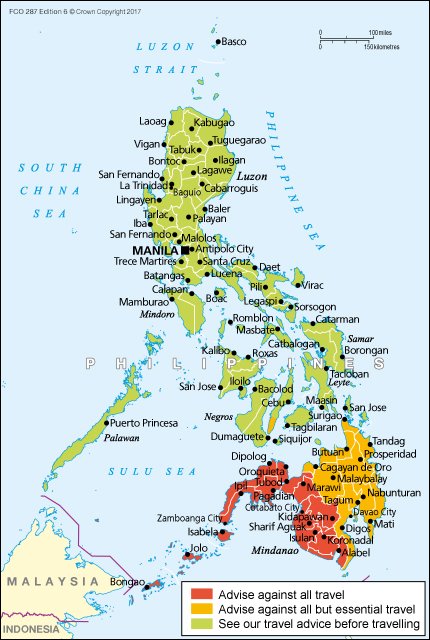
FCO map of the Philippines, with Mindanao in red and yellow
A Very Brief History of Mindanao
This long history of cultural and religious clashes has shaped the Mindanao that we see today. It's far too complicated and subjective for me to go into huge detail here, I just couldn't do it justice, but here's a very brief overview of the history of Mindanao for the last few hundred years.
The island of Mindanao has been inhabited by people of various cultures and religions for thousands of years. Islam had spread to the island by the 14th century through trade and war and Sultanates and Empires were established across Mindanao and the surrounding islands, one of the most influential and long-lasting being the Sultanate of Sulu.
The Spanish arrived in the Philippines in the 16th century and while they Christianised and colonized many of the islands, including much of the north of Mindanao, the Sultans still held onto power and would fight sporadically with the Spaniards late into the 19th century, a situation which would continue when the United States of America purchased the Philippines from Spain in 1898.
Parts of Mindanao always remained ill at ease with the colonisers and then with the independent Filipino government in Manila. In the 1960's political and religious groups in Southwest Mindanao began being formed to fight for more autonomy and independence. The Moro National Liberation Front is the most widely known, and the actions of this insurgent group eventually led to the creation of the Autonomous Region of Muslim Mindanao. Despite this, other groups still carried on fighting, including the unfortunately named MILF, The Moro Islamic Liberation Front, and the violent Abu Sayyaf, a radical group affiliated with ISIS that has been responsible for kidnappings, beheadings, bombings and the Siege of Marawi. Less well known than the Islamic groups is the presence too in the mountainous regions of Mindanao of a decades-long Communist Insurgency that periodically flairs up.
Communists, self-styled freedom fighters, terrorists, extremists. Whatever they prefer to be called, Mindanao seems to have them all. And this history of conflict and tension is the reason that many governments warn their citizens to stay as far away from Mindanao as they can.
And with the Siege of Marawi having ended just a year earlier, with Martial Law still in effect and the anniversary of the siege landing during my trip to Cagayan de Oro, I was wondering if it was such a good idea to be visiting. I was already committed though.
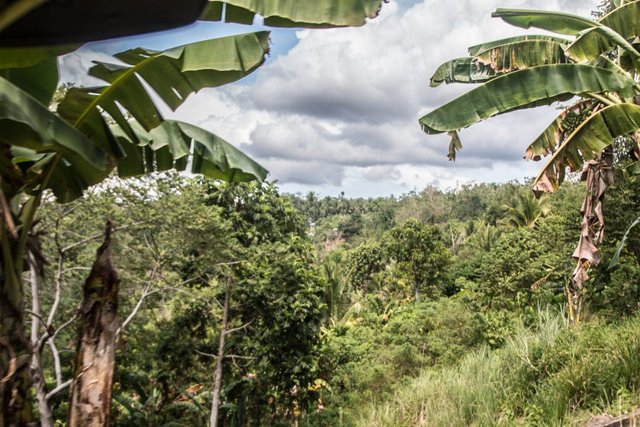
Why Did I Want To Travel To Mindanao?
This was my second time in the Philippines and after visiting Luzon, Coron and Palawan, as beautiful as they are, I wanted to see more of this huge island nation. I couldn't ignore Mindanao, the second largest island in a country of over 7000 islands.
I had been somewhat inspired by Canadian Blogger Kyle Jennermann, otherwise known as Becoming Filipino. He's one of the few bloggers I knew of who had for a start actually visited Mindanao. He loved the island so much that he now lives in Cagayan de Oro and is a huge advocate for tourism there. Kyle had never been kidnapped, except by the kindness of the people he met in his adopted home.
As nervous as I was when I first stepped onto the plane in Cebu for the short flight to Cagayan de Oro, my fears were soon allayed by the friendly Filipino who sat next to me. Romeo was a priest, originally from Iligan City just down the road from Cagayan de Oro and not far from Marawi City. "Mindanao has its troubles", he said "But now it is safe in CdO [Cagayan de Oro]. There is so much security at the moment, nothing will happen now".
I was less nervous when I finally stepped out onto the tarmac in Mindanao to be greeted by a fiery sunset. In the arrivals hall, Romeo had collected together all the tourist leaflets I might find useful and even a map of the city to hand over to me before I left the airport for CdO.
Perhaps I'd be alright here after all.
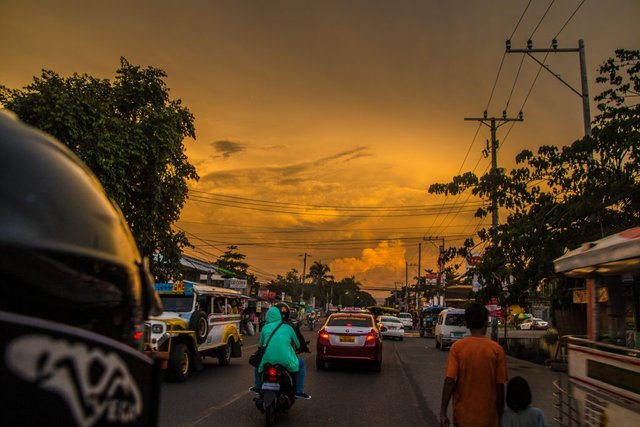
Rafting in Cagayan de Oro
Although Cagayan de Oro and Mindanao may not be high up on foreign traveller's itineraries in the Philippines, Northern Mindanao is still a hot destination for domestic tourists and I soon found myself welcomed into the city's Tourism Office by the local advisors.
"Are you here to find a wife?" The tourism manager seemed rather shocked that I was in fact here to be a tourist. I was the first Englishman that he'd met in the city but hopefully not the last, he added.
After a few selfies and pictures together, I was soon being sent off by the team on a rafting trip down the nearby river. Unknown to me, it turns out that Cagayan de Oro is the adventure and rafting capital of the Philippines.
I travelled out with a group of Filipino tourists in a Jeepney loaded up with whitewater rafts, paddles and life jackets and was soon in the countryside by the city, wondering if there would be a terrorist around the next bend waiting to kidnap and ransom me.
There were no terrorists and I was soon rafting down the river with Filipino tourists in the wilds of the Cagayan de Oro countryside.
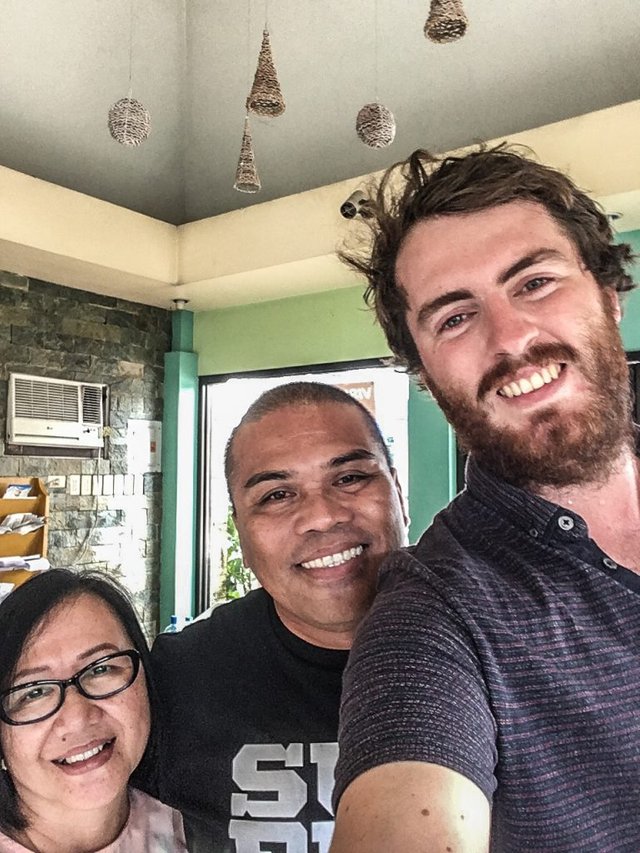
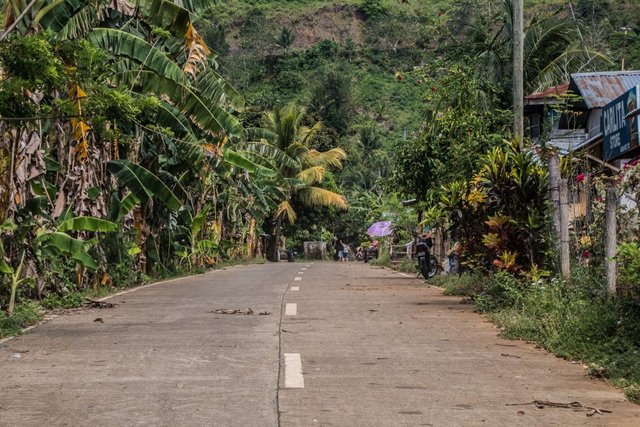
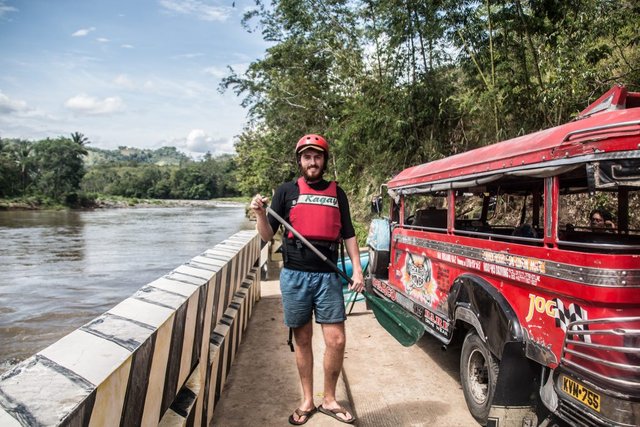
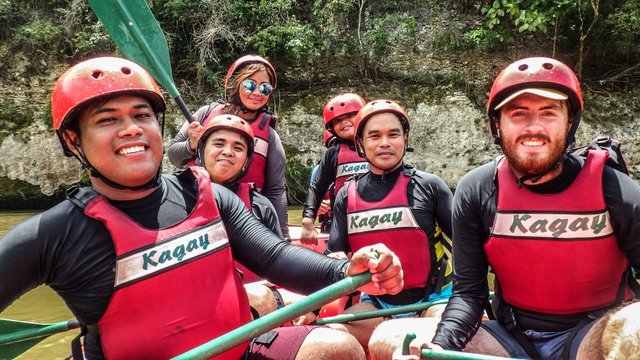
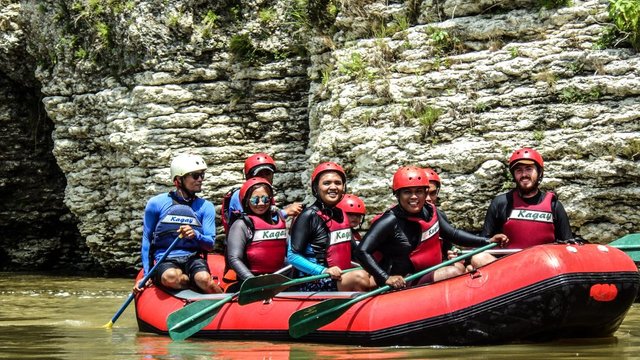
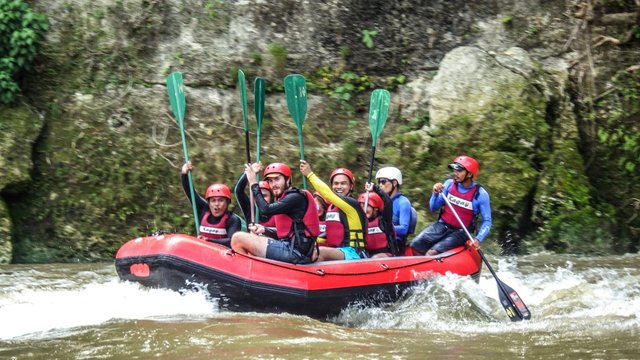
Is Cagayan de Oro Safe?
I was nervous to begin with when I reached Cagayan de Oro, and not the usual nervousness I feel in a new city or place. I knew I was nervous because of Mindanao's reputation. But within a day or so, after rafting down the river, walking around CdO on foot and meeting with locals and Filipino tourists, I felt safe.
As safe as anywhere else in the Philippines, if not safer because of the very visible presence of armed troops and police. People were genuinely interested in me being there. I eventually felt safer walking the streets of the city than anywhere else in the country, certainly more so than I'd ever felt in Manila or Cebu.
The day after rafting, I took another leap of faith with Mindanaon hospitality. I'd been in Coron for the two weeks prior to landing in CdO and a Filipino tour guide I'd met there from Mindanao had put me in contact with her brother who lived in the city and who had offered to show me around on his motorcycle. In Coron, Yetz had been surprised that I was visiting Mindanao and had even joked that she was "Abu Sayaff" when I asked her if it was safe.
To a local, this was a silly question. Of course, it was safe.
In CdO, I met with Yetz's brother Earl and his motorcycling friend Deo. I was apprehensive after Yetz had joked she might be an Abu Sayaff terrorist and my initial thoughts when I jumped on the back of Earl's bike at 6 am in the morning concerned kidnapping and beheading. It didn't help that we were visiting Iligan City and Tinago Falls which were just up the road from Marawi. My old prejudices were hard to shake, but Earl and Deo soon showed me the true meaning of Filipino hospitality.
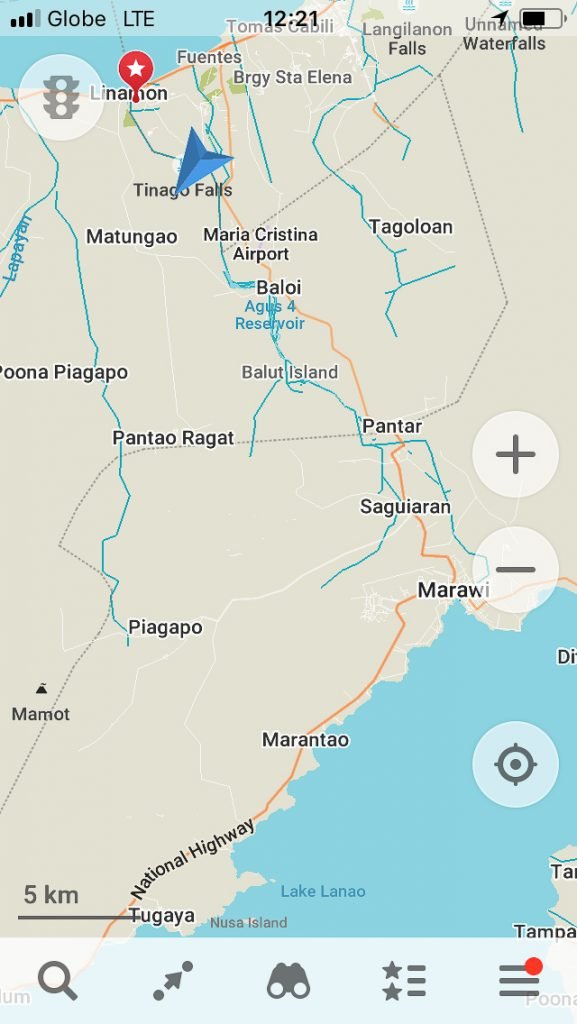
Motorcycling to Iligan City
Earl and Deo were Cagayan de Oro locals. They wanted to prove to me that their home city was safe and were going to to take me around the waterfalls of Iligan City, a place known as the City of Majestic Waterfalls.
"When you think of Mindanao, you think of a war zone, but really it's not that way", Earl said to me as we drove away from CdO and towards Iligan. He went on to explain that during the Siege of Marawi this road out towards Iligan was full of checkpoints and long lines, but the security was necessary. Even a year later and Iligan City was still under curfew.
Marawi was completely closed off, but Earl had actually visited during the siege as a photographer. His friend was in the armed forces and Earl had travelled there to photograph him being awarded a medal. He'd seen the damage first hand, but he also said that Cagayan de Oro and Iligan, although geographically close to Marawi were completely removed.
Earl said that Marawi had always been an unpredictable place and when the military went in last year to try and capture the leader of Abu Sayyaf, things escalated quickly. Earl and Deo though said they never felt at threat in Cagayan de Oro. They even asked me how dangerous London and Manchester were these days in the wake of terror attacks there last year.
Did I feel unsafe there?
It's all, I began to realise, simply a matter of perception.
The City of Majestic Waterfalls
On the way to Iligan City we visited mangroves and boardwalks along the coastal road. Mindanao is truly a beautiful island and it's a shame that the name Mindanao is mired in conflict and terrorism. We'd set out early and at the mangroves, we stopped for a coffee break.
Ear and Deo had brought along fresh coffee from Bukidnon, a province in central Mindanao. It was so fresh we had to grind the beans ourselves.
By lunchtime we were in Iligan City, riding through the busy streets and looking for a lunch stop. It seemed like life as normal here. There were soldiers and policemen on the streets but the locals were just getting on with life.
We stopped for a local delicacy, a huge portion of Lechon, a delicious pork dish served up with rice. Over lunch, I realised that the only thing that was going to kill me in Mindanao was too much Lechon and this uncompromising Filipino hospitality.
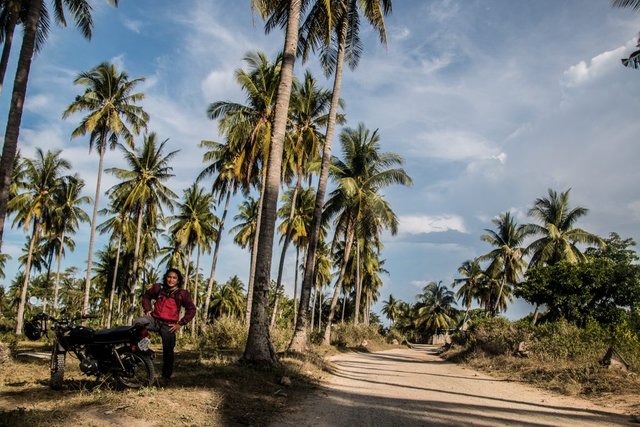
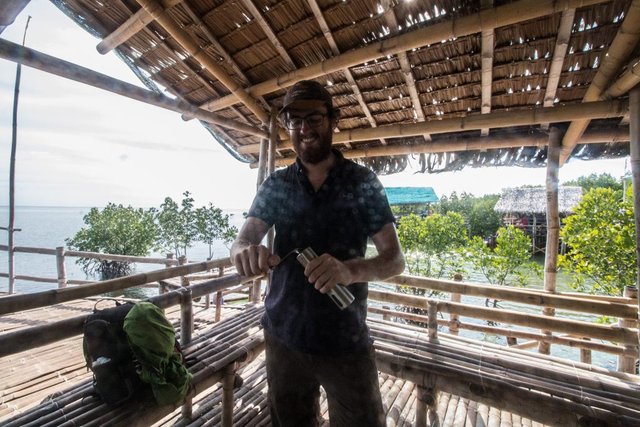
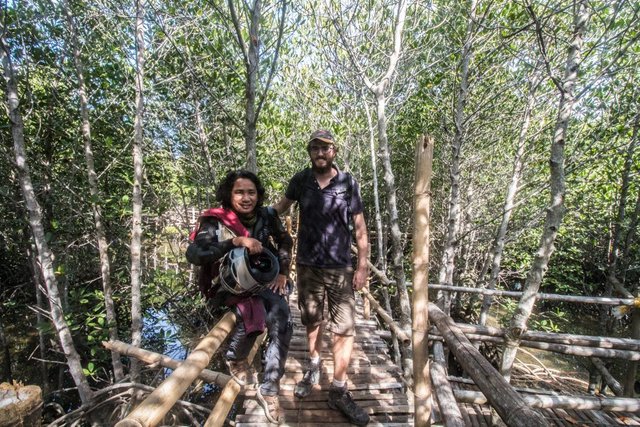
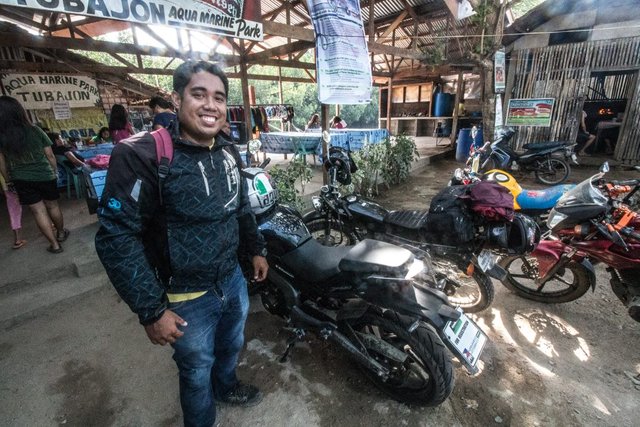
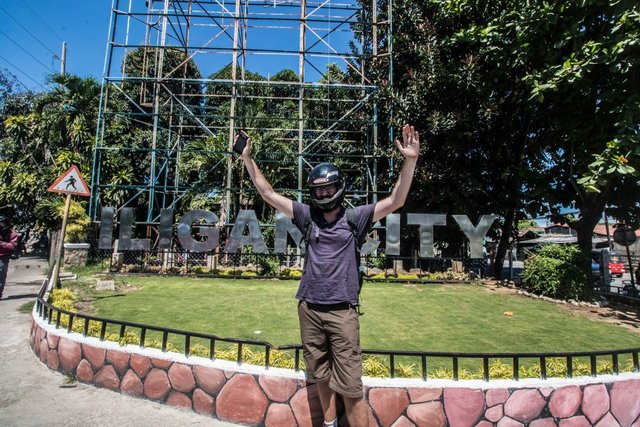
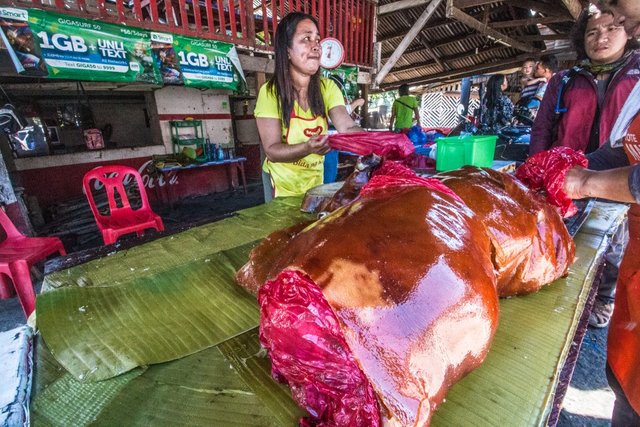
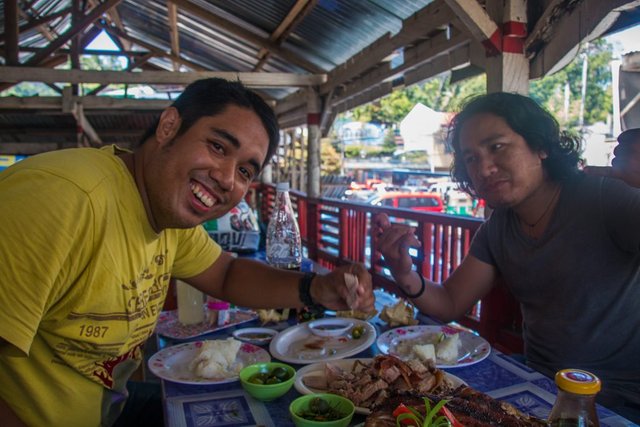
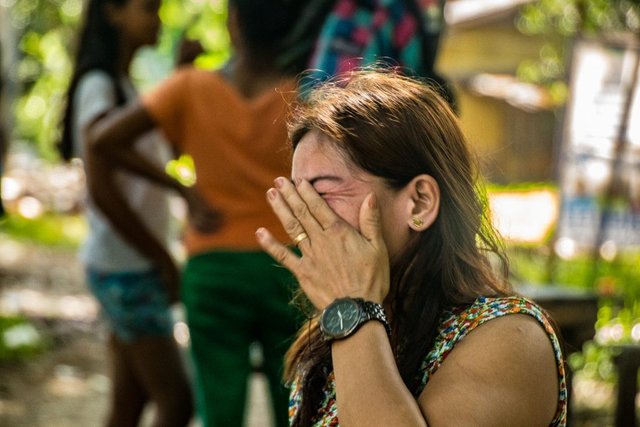
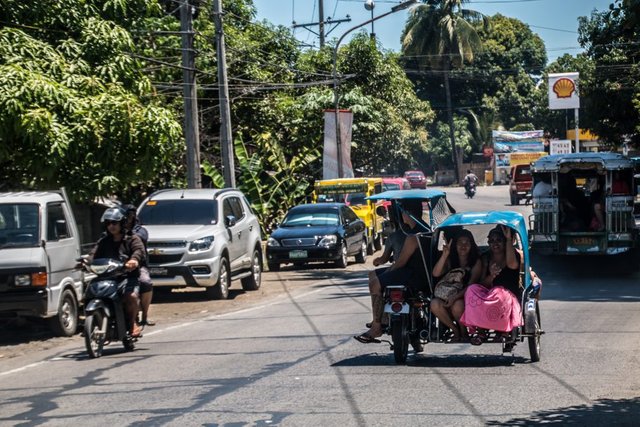
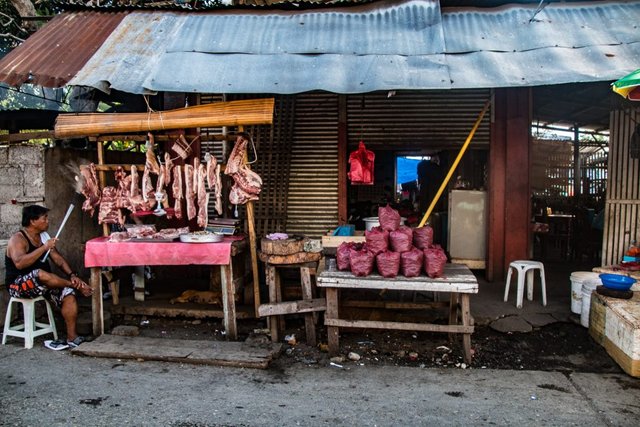
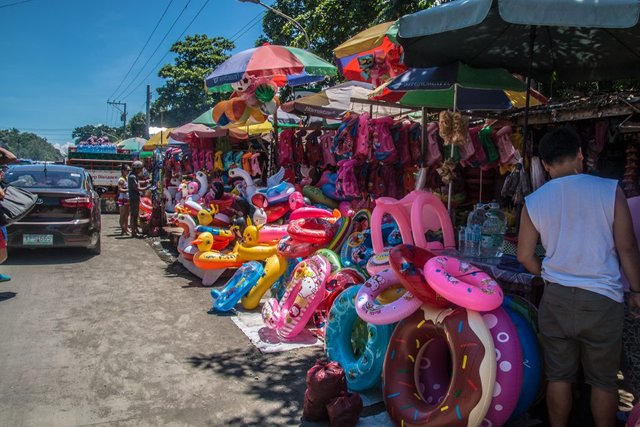
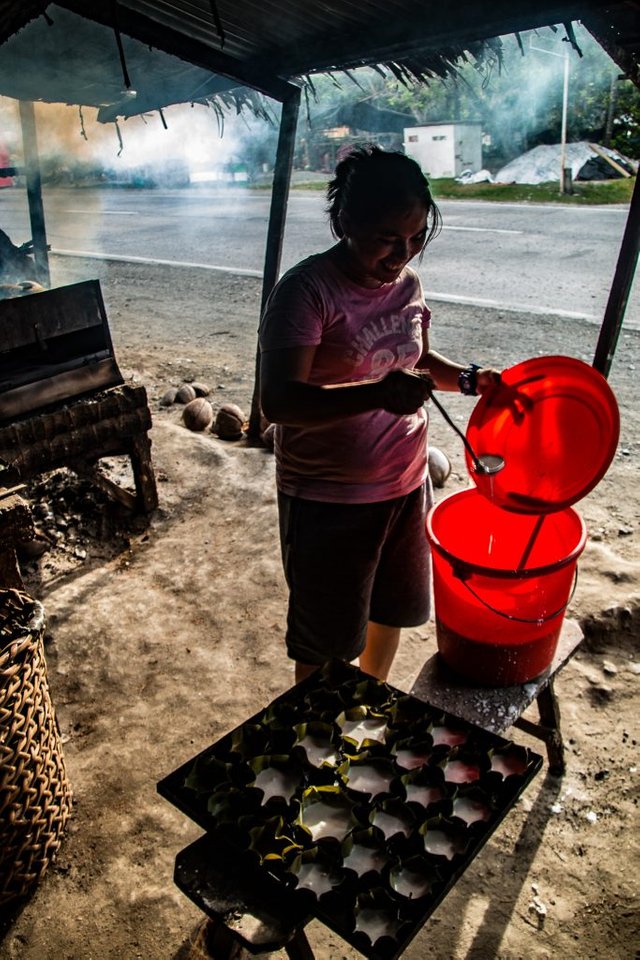
Maria Christina Waterfall and Tinago Falls
The City of Majestic Waterfalls lived up to its title. After the Lechon lunch, we drove out to visit two of the city's most majestic falls.
The Maria Christina waterfall is a beautiful, long drop falls that actually provides hydroelectric power to most of Northern Mindanao. This was an area that was heavily guarded, drone photography was banned and visitors were urged to unload their weapons on entry.
The falls were very majestic, but the real fun was about to begin at the next waterfall we were visiting out in the countryside and ever closer to Marawi.
The Tinago Falls were just outside of Iligan City and with it being the weekend, were absolutely full of locals jumping off rocks and enjoying the cold water.
Filipinos know how to enjoy a waterfall, and at Tinago Falls they've rigged up a huge bamboo raft that takes people across the water and right underneath the falls.
We spent the afternoon swimming at Tinago Falls before making the journey back to Cagayan de Oro.
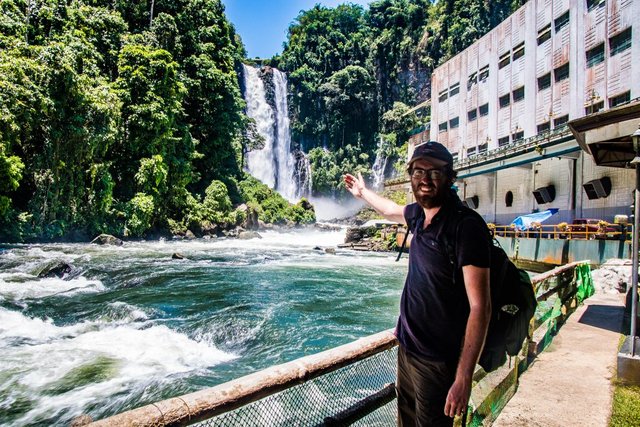
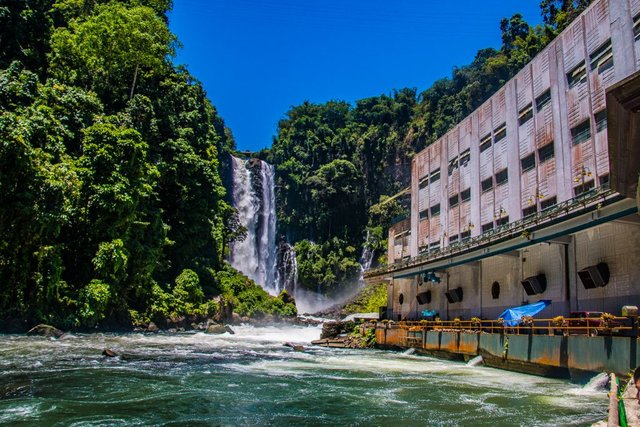
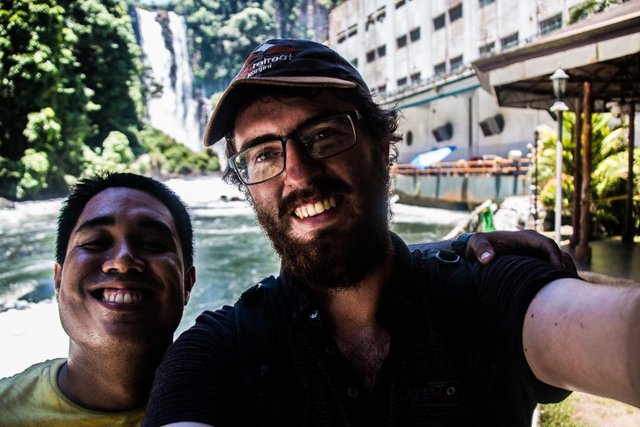
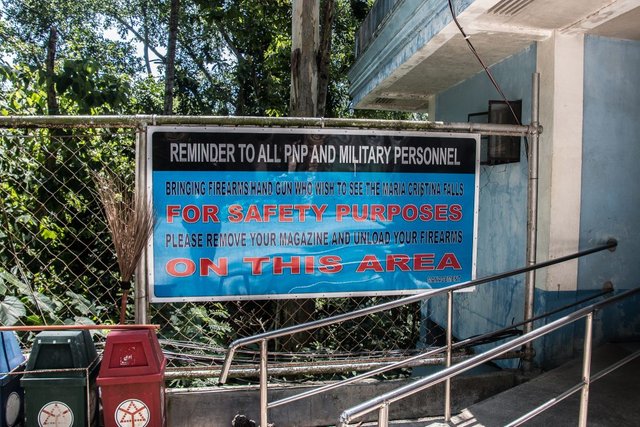
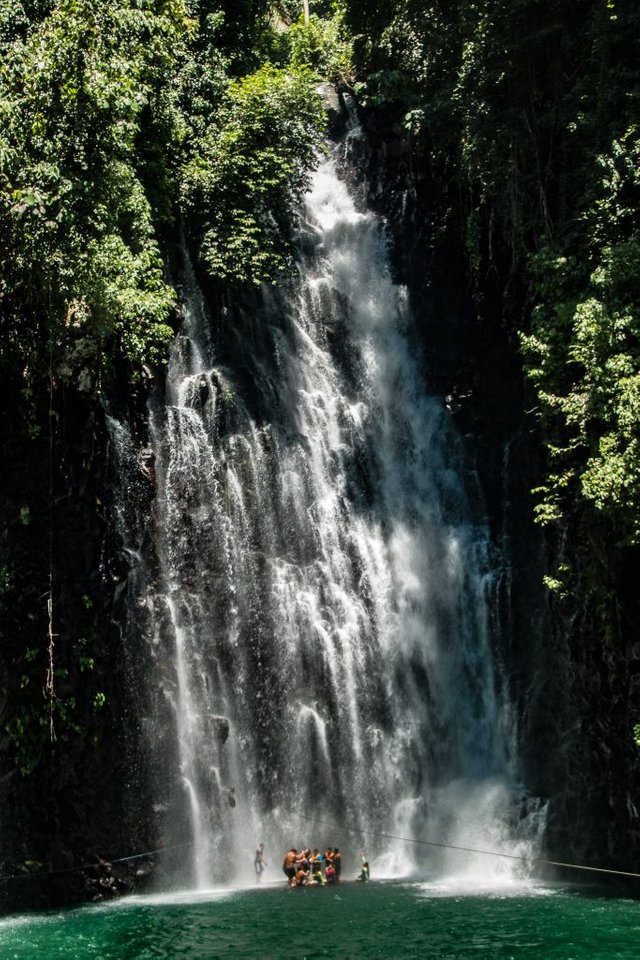
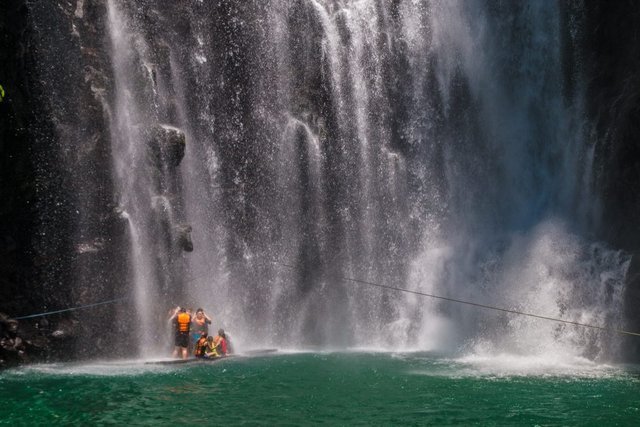
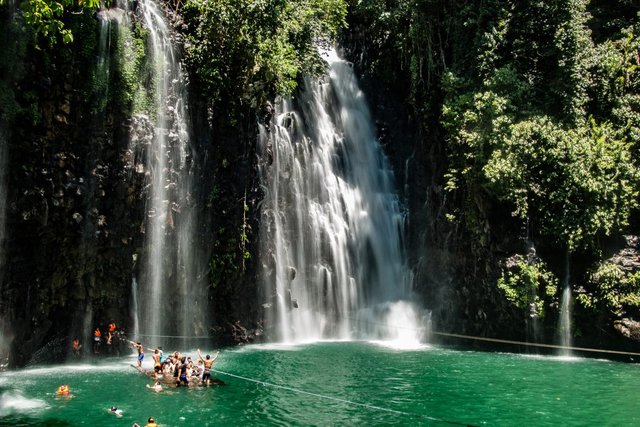
Is Mindanao safe To Travel To?
So is Mindanao really safe to travel to? In Cagayan de Oro I visited a mountaintop bar to watch the sunset with Earl and over a few beers he told me that there are some areas of Mindanao, especially in the southwest that he wouldn't visit. The north, yes. This was his home and as I had seen myself, Cagayan de Oro was a safe city.
Mindanao is huge too. There are hundreds of islands and towns and cities to visit. Each is unique and everywhere is varied, with different dialects spoken, different cuisine, religions and history. Just as it was impossible for me to see the entirety of the island in just the week I had, it's impossible for me to generalise when it comes to safety here.
But the point is, the whole island shouldn't simply be lumped under one banner of terrorism and conflict. It's simply not the case, but until travelling there and experiencing Mindanao for yourself, it's impossible to understand this fact in its entirety.
In fact, there's so much more to Mindanao that I already want to return again. In retrospect, I probably should have titled this article, Is Northern Mindanao Safe to Visit? There's just so much I haven't yet experienced.
There's a lot left for me to see across this huge, diverse island. There's an enchanted river, there's an entire region where the inhabitants speak a unique dialect of Spanish, there are secret beaches, pineapple plantations and millions of Filipinos to meet across the rest of Mindanao and I can't wait to see it all.
Have you travelled to Mindanao? Let me know your experience and thoughts on safety in the region in the comments below!
All Words and Photos by Richard Collett
To the question in your title, my Magic 8-Ball says:
Hi! I'm a bot, and this answer was posted automatically. Check this post out for more information.
Downvoting a post can decrease pending rewards and make it less visible. Common reasons:
Submit
I am from Mindanao, and I appreciate your kind words about the island. I am glad you were able to enjoy your trip and that you got through it all just fine.
Sorry for asking the obvious, but is the blogspot https://www.travel-tramp.com/, yours? So you don't get any messages from cheetah, I suggest you cite your blogspot. Cheetah is a robot and will automatically send you a message saying the post is similar with other blogs. =D
Downvoting a post can decrease pending rewards and make it less visible. Common reasons:
Submit
Thanks ! And yes the blog is my own, this is all my work.
Downvoting a post can decrease pending rewards and make it less visible. Common reasons:
Submit
This is a spectacular piece! Bit the write-up as the adventure itself. Countries are ALWAYS friendlier than our governments make us believe. That’s because in principal, people’s nature is good. I’m glad you went and gained all these stories and friendships <3
Downvoting a post can decrease pending rewards and make it less visible. Common reasons:
Submit
Thank you! You are so right. And it was such an incredible experience!
Downvoting a post can decrease pending rewards and make it less visible. Common reasons:
Submit
This post was shared in the Curation Collective Discord community for curators, and upvoted and resteemed by the @c-squared community account after manual review.
Downvoting a post can decrease pending rewards and make it less visible. Common reasons:
Submit
Thank you for visiting the Philippines, and for a thorough recount of your experience in Mindanao. Your post is featured in @bayanihan's 40th Philippines' Curation Updates and received a 100% upvote.
Downvoting a post can decrease pending rewards and make it less visible. Common reasons:
Submit
Great post. I'm intrigued by Mindanao now.
Downvoting a post can decrease pending rewards and make it less visible. Common reasons:
Submit
This is an awesome blog and for my feeling you really made much phillipinos happy with this blog. Of course Mindanao simply can not be all bad. I completely follow your opinion about that. Walking around in Amsterdam isn't that much safer I guess. Every place on earth has it's own troubles ... but there are always 'jewels to discover'. Like you did. Fantastic travelblog to read and see.
Downvoting a post can decrease pending rewards and make it less visible. Common reasons:
Submit